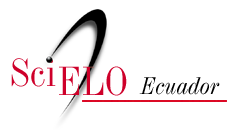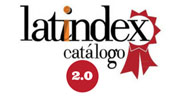Desarrollo de Arquitectura Empresarial usando un Framework con Enfoque Agil
DOI:
https://doi.org/10.29019/enfoqueute.v8n1.120Palabras clave:
Arquitectura Empresarial, TOGAF, ADM, Enfoque Ágil, Estrategia Empresarial.Resumen
El desarrollo de una arquitectura empresarial (AE) en grandes organizaciones es muy complejo. Por lo tanto, es importante que la implementación de la AE cree valor en etapas tempranas del proceso para que los directivos apoyen esta iniciativa. Este documento presenta el diseño de un framework de AE que permite el desarrollo de arquitecturas con un enfoque ágil basado en TOGAF. Esta propuesta se la hace con el objetivo de agilizar el proceso de AE. Este framework plantea un nuevo diseño tomando en cuenta el marco regulatorio vigente, la línea destino de la organización y los principios propuestos por el enfoque ágil de AE. Los objetivos de cada etapa del método de desarrollo de arquitecturas ADM de TOGAF se cruzan con los requerimientos de la organización para extraer únicamente aquellos que se ajustan al giro del negocio. Se analiza los entregables propuestos por TOGAF con el fin de obtener, integrar y reducir la documentación en las fases de implementación y modelamiento, permitiendo mayor agilidad, menor impacto en los procesos, disminución en tiempos de desarrollo y costos.
Descargas
Referencias
Ambler, S. (2002). Agile Modeling: Effective Practices for eXtreme Programming and the Unified Process.
Blom, A. C. (2003). Enterprise Modernization (Vol. 7), No. 2, 2003.
Bricknal, R., Darrell, G., Nilsson, H., & Pessi, K. (2011). Enterprise Architecture: Critical Factors affecting modelling and management.
Gonzáles, E., & Álzate, J. (2010). Frameworks de Arquitectura Empresarial. Retrieved Aug 20, 2016, from https://arquitecturaempresarialcali.wordpress.com/2010/11/16/frameworks-de-arquitectura-empresarial/
Group, T. O. (2011). TOGAF ® Version 9.1. Retrieved from http://goo.gl/djuv15.
Koontz, H., Weihrich, H., & Cannice, M. (2012). Administración una Perspectiva Global y Empresarial. Mc Graw Hill 14ava ed..
Regional, U. E. (2011). Alcanzar un crecimiento inteligente, sostenible e integrador (Vol. 36). Panor. Inforegio. No. Vol 36, 2011
Publicado
Número
Sección
Licencia
Los autores retienen todos sus derechos (© copyright).
- Los autores retienen sus derechos de marca y patente, y también sobre cualquier proceso o procedimiento descrito en el artículo.
- Los autores retienen el derecho de compartir, copiar, distribuir, ejecutar y comunicar públicamente el artículo publicado en Enfoque UTE (por ejemplo, colocarlo en un repositorio institucional o publicarlo en un libro), siempre que se dé el reconocimiento de su publicación inicial en la revista Enfoque UTE.
- Los autores retienen el derecho a hacer una posterior publicación de su trabajo, de utilizar el artículo o cualquier parte de aquel (por ejemplo: una compilación de sus trabajos, notas para conferencias, tesis, o para un libro), siempre que indiquen la fuente de publicación (autores del trabajo, revista, volumen, número y fecha).
























